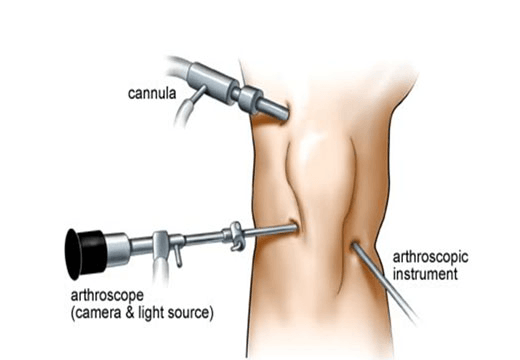What Is Arthroscopy?
Arthroscopy (also called arthroscopic or keyhole surgery) is a minimally invasive surgical procedure on a joint in which an examination and treatment of damage is performed using an arthroscope, an endoscope that is inserted into the joint through a small incision.
What Happens During the Procedure?
Your doctor will perform arthroscopic surgery in a hospital or outpatient operating room. That means you can go home the same day. The type of anesthesia you’ll receive depends on the joint and what your surgeon suspects is the problem. It may be general anesthesia (you’ll be asleep during surgery), or your doctor will give it to you through your spine. He might also numb the area he’s doing the surgery on.

Why Arthroscopy?
People may choose arthroscopy instead of other surgical procedures because of :
- Less tissue damage
- Faster healing time-Quick recovery
- Small Incisions-fewer stitches
- Less pain
- A lower risk of infection
Conditions
- Meniscal Tears
- ACL (Anterior Cruciate Ligament) Injury
- PCL (Posterior Cruciate Ligament) Injury
- Collateral Ligament tear
- Multi ligament injuries
- Cartilage related problems
- Synovitis ( PVNS)
- Loose bodies
- Knee septic arthritis
- Patella dislocation/subluxation
Treatment
- Meniscal repair/menisectomy
- ACL repair/reconstruction
- PCL reconstruction
- MCL/LCL repair/reconstruction
- PLC/PMC reconstruction
- Chondroplasty/Mosiacplasty/ACI/BMAC
- Synovectomy/Synovial biopsy
- Loose body removal
- Joint lavage
- MPFL repair/reconstruction
- Tibial tuberosity transfer
- Trochleoplasty

Conditions
- Recurrent shoulder dislocation
- SLAP tears
- Rotator cuff tears
- Frozen shoulder
- Calcific tendinitis
Treatment
- Bankarts repair
- SLAP repair
- Capsular release
- Removal of Calcium deposits
- Long head biceps tenotomy/tenodesis


